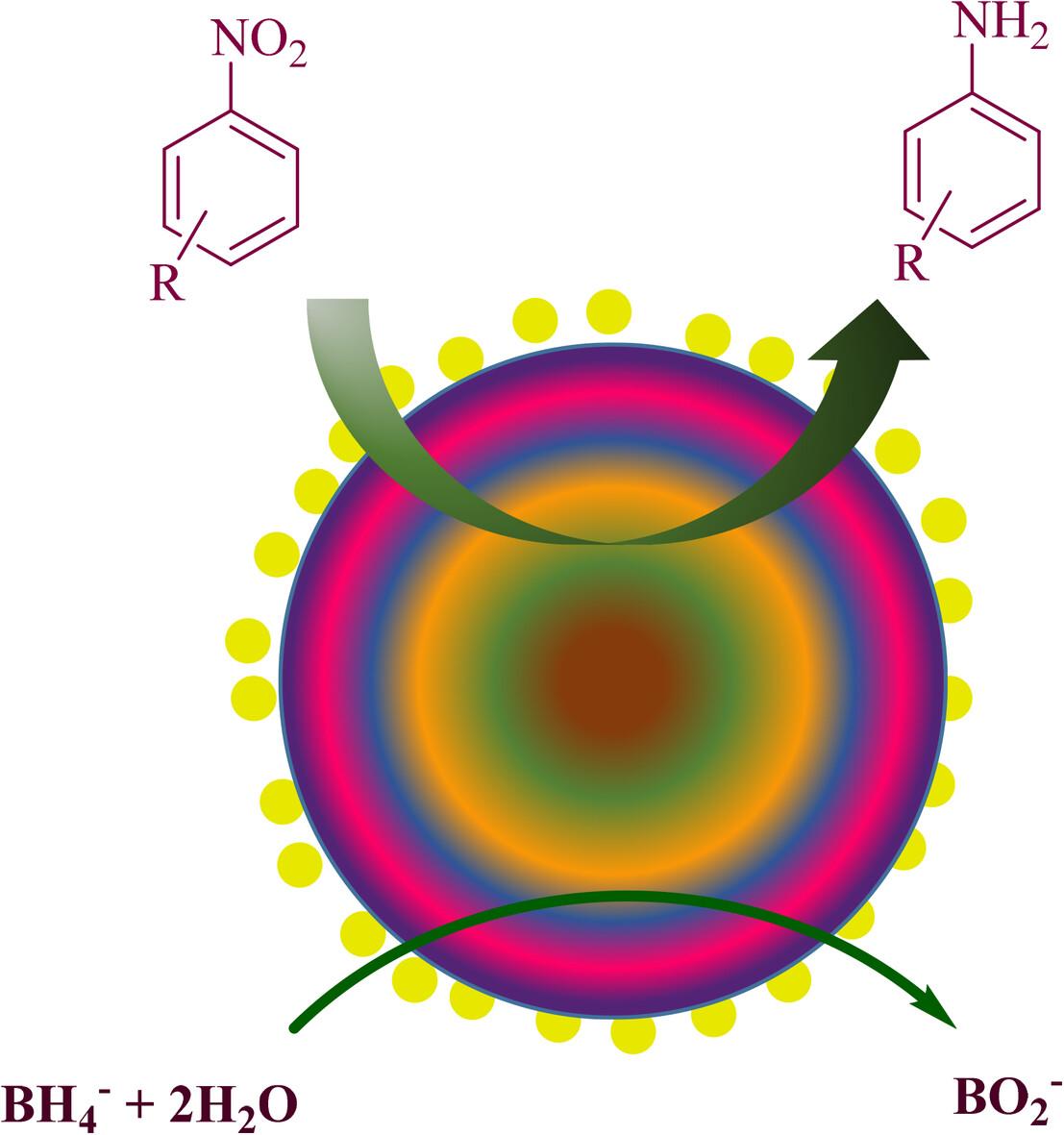求助PDF
{"title":"设计基于 EDTA 功能化氨基改性 PNIPAM 支持的金纳米粒子的磁性催化剂,用于还原水中的硝基化合物","authors":"Hadieh Rahbar Kafshboran, Soheila Ghasemi","doi":"10.1002/pi.6625","DOIUrl":null,"url":null,"abstract":"<p>A novel smart catalyst was developed with amino-modified thermo-responsive poly(<i>N</i>-isopropyl acrylamide) (PNIPAM) grafts on silica-coated magnetic nanoparticles using the conventional free radical polymerization process. By this methodology, the polymer was successfully grafted mainly onto silica-modified iron oxide nanoparticles (Fe<sub>3</sub>O<sub>4</sub>@Si). The PNIPAM-grafted Fe<sub>3</sub>O<sub>4</sub>@Si was then subjected to ethylenediamine treatment to produce the amino-functionalized support (Fe<sub>3</sub>O<sub>4</sub>@Si@PNIPAM-NH<sub>2</sub>), which was subsequently modified with carboxyl functional groups by using EDTA (ethylenediaminetetraacetic acid) to create Fe<sub>3</sub>O<sub>4</sub>@Si@PNIPAM-NH<sub>2</sub>-EDTA. Au nanoparticles were then decorated on this support through its two amines and four carboxylates. Different methods were used to study this novel catalyst, including inductively coupled plasma, Fourier transport infrared spectroscopy, TGA, dynamic light scattering, SEM, energy-dispersive X-ray analysis, vibrating sample magnetometry, XRD and elemental CHN analysis. The reduction of several aryl-nitro derivatives demonstrated a significant catalytic activity for the as-synthesized gold catalyst (Fe<sub>3</sub>O<sub>4</sub>@Si@PNIPAM-NH<sub>2</sub>-EDTA-Au). The Au catalyst can be successfully removed from the reaction components using a magnetic field and used again in eight successive reduction reactions without significant gold leaching and loss of catalytic activity. © 2024 Society of Industrial Chemistry.</p>","PeriodicalId":20404,"journal":{"name":"Polymer International","volume":"73 7","pages":"530-544"},"PeriodicalIF":3.6000,"publicationDate":"2024-02-28","publicationTypes":"Journal Article","fieldsOfStudy":null,"isOpenAccess":false,"openAccessPdf":"","citationCount":"0","resultStr":"{\"title\":\"Designing magnetic catalysts based on gold nanoparticles supported by ethylenediamine tetraacetic acid functionalized amino-modified poly(N-isopropyl acrylamide) for reduction of nitro compounds in water\",\"authors\":\"Hadieh Rahbar Kafshboran, Soheila Ghasemi\",\"doi\":\"10.1002/pi.6625\",\"DOIUrl\":null,\"url\":null,\"abstract\":\"<p>A novel smart catalyst was developed with amino-modified thermo-responsive poly(<i>N</i>-isopropyl acrylamide) (PNIPAM) grafts on silica-coated magnetic nanoparticles using the conventional free radical polymerization process. By this methodology, the polymer was successfully grafted mainly onto silica-modified iron oxide nanoparticles (Fe<sub>3</sub>O<sub>4</sub>@Si). The PNIPAM-grafted Fe<sub>3</sub>O<sub>4</sub>@Si was then subjected to ethylenediamine treatment to produce the amino-functionalized support (Fe<sub>3</sub>O<sub>4</sub>@Si@PNIPAM-NH<sub>2</sub>), which was subsequently modified with carboxyl functional groups by using EDTA (ethylenediaminetetraacetic acid) to create Fe<sub>3</sub>O<sub>4</sub>@Si@PNIPAM-NH<sub>2</sub>-EDTA. Au nanoparticles were then decorated on this support through its two amines and four carboxylates. Different methods were used to study this novel catalyst, including inductively coupled plasma, Fourier transport infrared spectroscopy, TGA, dynamic light scattering, SEM, energy-dispersive X-ray analysis, vibrating sample magnetometry, XRD and elemental CHN analysis. The reduction of several aryl-nitro derivatives demonstrated a significant catalytic activity for the as-synthesized gold catalyst (Fe<sub>3</sub>O<sub>4</sub>@Si@PNIPAM-NH<sub>2</sub>-EDTA-Au). The Au catalyst can be successfully removed from the reaction components using a magnetic field and used again in eight successive reduction reactions without significant gold leaching and loss of catalytic activity. © 2024 Society of Industrial Chemistry.</p>\",\"PeriodicalId\":20404,\"journal\":{\"name\":\"Polymer International\",\"volume\":\"73 7\",\"pages\":\"530-544\"},\"PeriodicalIF\":3.6000,\"publicationDate\":\"2024-02-28\",\"publicationTypes\":\"Journal Article\",\"fieldsOfStudy\":null,\"isOpenAccess\":false,\"openAccessPdf\":\"\",\"citationCount\":\"0\",\"resultStr\":null,\"platform\":\"Semanticscholar\",\"paperid\":null,\"PeriodicalName\":\"Polymer International\",\"FirstCategoryId\":\"92\",\"ListUrlMain\":\"https://onlinelibrary.wiley.com/doi/10.1002/pi.6625\",\"RegionNum\":4,\"RegionCategory\":\"化学\",\"ArticlePicture\":[],\"TitleCN\":null,\"AbstractTextCN\":null,\"PMCID\":null,\"EPubDate\":\"\",\"PubModel\":\"\",\"JCR\":\"Q2\",\"JCRName\":\"POLYMER SCIENCE\",\"Score\":null,\"Total\":0}","platform":"Semanticscholar","paperid":null,"PeriodicalName":"Polymer International","FirstCategoryId":"92","ListUrlMain":"https://onlinelibrary.wiley.com/doi/10.1002/pi.6625","RegionNum":4,"RegionCategory":"化学","ArticlePicture":[],"TitleCN":null,"AbstractTextCN":null,"PMCID":null,"EPubDate":"","PubModel":"","JCR":"Q2","JCRName":"POLYMER SCIENCE","Score":null,"Total":0}
引用次数: 0
引用
批量引用


 求助内容:
求助内容: 应助结果提醒方式:
应助结果提醒方式:


